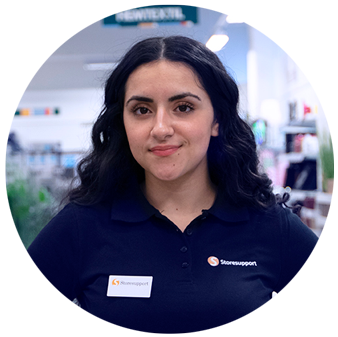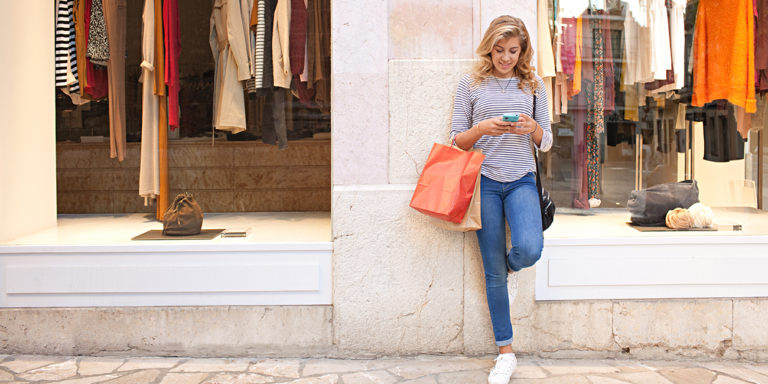Behöver du hjälp?
Vi vill gärna hjälpa dig!
Välj nedan vilket kontaktsätt som passar dig bäst.

Vi vill gärna hjälpa dig!
Välj nedan vilket kontaktsätt som passar dig bäst.

Digitalisation has invited the retail sector to a new dance. A dance where it is no longer companies but consumers that lead. We are living in an innovative new age where the purchasing process has gone from being a linear process from discovering a need to completing a purchase, towards a purchase process where the complexity is far greater. The buying journey today is a holistic experience of many direct and indirect physical and digital interactions a consumer has with a company. This means that instead of a linear purchase process there are now many different processes that move across different channels and at different times. The digital revolution is changing and disrupting the order we have been used to.

Smartphones are the greatest driver of this digital revolution of the purchasing process today. In 2015, 77 percent[1] of Swedes had a smartphone. According to Google, more searches are now performed via smartphones than from computers and over half of all web traffic comes from mobile devices. A significant force has therefore been unleashed, in that so many people have internet access within arm’s reach. To better understand how smartphones are changing the purchasing process, we are going to take a closer look at three places that symbolise three different changes to the purchasing journey – a sofa, a bricks and mortar store and the street.
Firstly, a purchase process often starts from a sofa today (or just as likely in bed or on a bus) together with a smartphone. The source of inspiration for consumers has moved to their personal screens where many of the factors behind a purchase decision, such as personal preferences, dreams, lifestyle and personality, are shaped by what we see and hear. Social media, comparison sites, blogs, portals for special interests, company websites and Google have opened up a flow of impressions that mould inspiration and purchase needs. Mobile searches are becoming the new shop window for retail companies. The actual buying has also been made easier with a smartphone. More and more Swedish consumers are making their purchases via their smartphone. The latest available figures from the e-barometer show that 25 percent of all e-commerce purchases in March 2016 were completed on a smartphone.
Secondly, smartphones have become an additional help tool when consumers find themselves in a bricks and mortar store. Via a smartphone, consumers can obtain extensive information, access price comparisons for the same or similar products, scan for payment in grocery stores or maybe even receive specially tailored offers by text message. Different studies suggest different figures, but somewhere between 75 and 90 percent of consumers in the USA have used their smartphone in a bricks and mortar store and a significant proportion of these have made a purchase via their smartphone while in store. These purchases are made when a product is not available in stock, or in the right size or if the same product is cheaper in an online store.
Thirdly, when a consumer suddenly discovers an immediate need when they are in a street their smartphone is often their main lifeline. Not as a purchasing channel but as a channel to find the nearest store that can meet their purchase need. According to Google, 30 percent of all searches via a smartphone concern looking for specific places, products or companies. The visitor economy claims that searches via smartphone often result in a higher conversion rate in both time and space which indicates that e.g. people are looking for a place to stay that is both close in time and close in space.
Smartphones are an innovative companion in all steps of the purchasing process from raising awareness of a need, to purchase completion. However, they also play a big role after a purchase. Support and service can be done by email, chat or phone call and in turn, retailing companies can easily reach out to their customers to reinforce loyalty via new offers or rewards of various kinds.
At present, Swedish retailers still appear to be somewhat ambivalent about their relationship with smartphones. Certain retailers see smartphones as a shop window, others view them as a sales channel and yet another group see them as both of these. To date, development has very largely been consumer driven. It is consumers that have developed behaviour patterns that retailers have caught on to and adapted to. Few online stores were adapted to smartphones from the beginning and have since been developed in line with an understanding that their normal page format was clunky on a small screen. This is a good example of the laws that apply in retailing today. As with any other couple dancing, it is a case of the partner not leading, having to follow the other closely and be open and ready for new impulses. In specific terms for retailing companies, this means that it is of the utmost importance to have a presence in as many points of contact as possible between consumer and retailer to increase the chances of being a possible option in the eyes of the consumer. To be a winner in the smartphone world you also need to be able to help consumers filter information overload. The most important currency for consumers today is time and energy, which means that usefulness is restricted by too many choices and too much information.